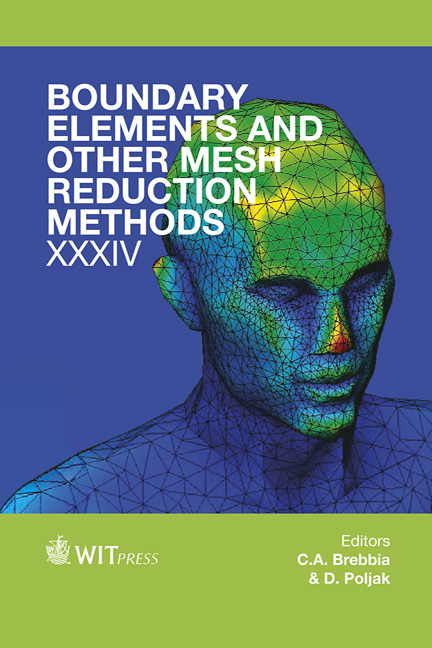A Coupling Strategy Between The BEM And Kansa’s Method For Acoustic Analysis Of Heterogeneous Media
Price
Free (open access)
Transaction
Volume
53
Pages
12
Page Range
109 - 120
Published
2012
Size
675 kb
Paper DOI
10.2495/BE120101
Copyright
WIT Press
Author(s)
L. Godinho & A. Tadeu
Abstract
The BEM is well established as a solid numerical technique for the analysis of acoustic and wave propagation problems. Its numerical formulation relies on previous knowledge of the Green’s functions for the specific problem to be studied, and thus it is usually limited to homogeneous media or to media incorporating regions with piecewise constant or with well-defined variations (such as linearly varying) of properties. In fact, the definition of these Green’s functions becomes difficult whenever more generic cases are considered, such as when the properties of the propagation media vary from point to point. For this case, when the properties of the medium inside a sub-region exhibit spatial variations, alternative approaches have to be used. In this work, a frequency domain model based on the joint use of the BEM and of the Kansa’s method is proposed to model such systems. In that model, the BEM is used to model the homogeneous part of the propagation domain, while Kansa’s method is used to model an heterogeneity, which may exhibit velocity variations from point to point. In the interface between the two parts of the domain, continuity of velocities and pressures are imposed. Kansa’s method is applied here making use of Multiquadric (MQ) RBFs, which incorporate a shape parameter that strongly influence the quality of its results. To overcome this problem, a general strategy based on the assessment of the domain error in the enforcement of the governing PDE is introduced to allow the definition of adequate values of this shape parameter. Keywords: boundary elements, Kansa’s method, acoustics, coupled methods.
Keywords
boundary elements, Kansa’s method, acoustics, coupled methods.





